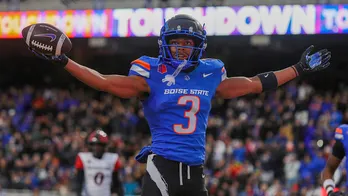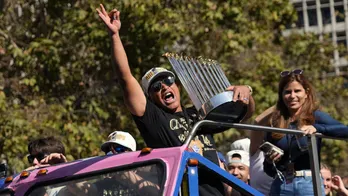Indian table tennis talent waits for system to blossom
On a couple of tables adjacent to Table 1 where Tomokazu Harimoto was playing his WTT Star Contender Goa quarter-final against An Jae-hyun on Saturday, Indians Manush Shah and Manav Thakkar were engaged in their respective sparring sessions.  PREMIUM
PREMIUM
Shah, 21, and Thakkar, 22, are among the brightest prospects in Indian table tennis, the latter having reached atop ITTF's U-18 and U-21 charts. Battling it out with Jae-hyun though was a 19-year-old Japanese player who is the current world No 4.
That, in essence, captures the present landscape of Indian table tennis. In terms of its talent pool and star value, there’s hardly been a better time. But in terms of staking a claim in shaking the world order, its time is yet to come.
A time when Indian paddlers go from being medal contenders at the Commonwealth Games to Asian Games and Olympics, from having that boom in 2018 to a more balanced high tone, from playing the elite WTT events to vying for titles in them.
Manika Batra, the India No 1 ranked 34 in the world, has provided glimpses of that with her 2022 Asian Cup bronze and 2023 WTT Contender Doha semi-final finish.
Sharath Kamal and G Sathiyan, 2022 CWG gold and bronze singles medallists, are in the top 50. In the young and rising category Thakkar and Shah have the company of Diya Chitale, the 2022 WTT Youth Contender Lima winner, Payas Jain, 17, who won the 2021 World Youth Championships bronze and the 2022 Asian junior mixed doubles gold partnering Yashaswini Ghorpade.
For Indian table tennis, these players going that one level up would be the critical next step, the kind badminton, and more recently chess, have.
“We are getting there,” Sathiyan said. “Badminton had a (Pullela) Gopichand, and a centre to produce players even before it got to where it is now. We have come this far without a centre like that.”
That kind of coaching centre, and a high-quality league, is almost the norm in the Asian and European TT powerhouses. India has neither. A full-time national coach too isn't around.
“We need to have our own training centres; countries that are doing well have that proper training structure,” said eight-time national champion Kamlesh Mehta, secretary-general in the recently reformed national federation. “Second is a pool of coaches. It’s important to groom our own for the long term.”
Paucity of which also makes the junior to senior transition more complex. Harmeet Desai, 29, said from his bunch of 4-5 boys who played the world juniors more than a decade ago, only he and Sathiyan are at the elite stage. “In other countries, almost all juniors make that jump,” he said. “For that, full-time coaching guidance is important, which not every player in India gets. Our players also have to go out, be it to play in tournaments, leagues or train.”
Hosting a WTT event could help. “That’s when facilities are built, infrastructure gets better and the sport will reach more people," Sathiyan said.
Senior pro Sharath added: “TT has come a long way in India. We’re still not the best in the world. But now is the time to get even better."
Experience unrestricted digital access with HT Premium
Explore amazing offers on HT + Economist Start 14 Days Free Trial Already Subscribed? Sign In
Disclaimer: The copyright of this article belongs to the original author. Reposting this article is solely for the purpose of information dissemination and does not constitute any investment advice. If there is any infringement, please contact us immediately. We will make corrections or deletions as necessary. Thank you.







